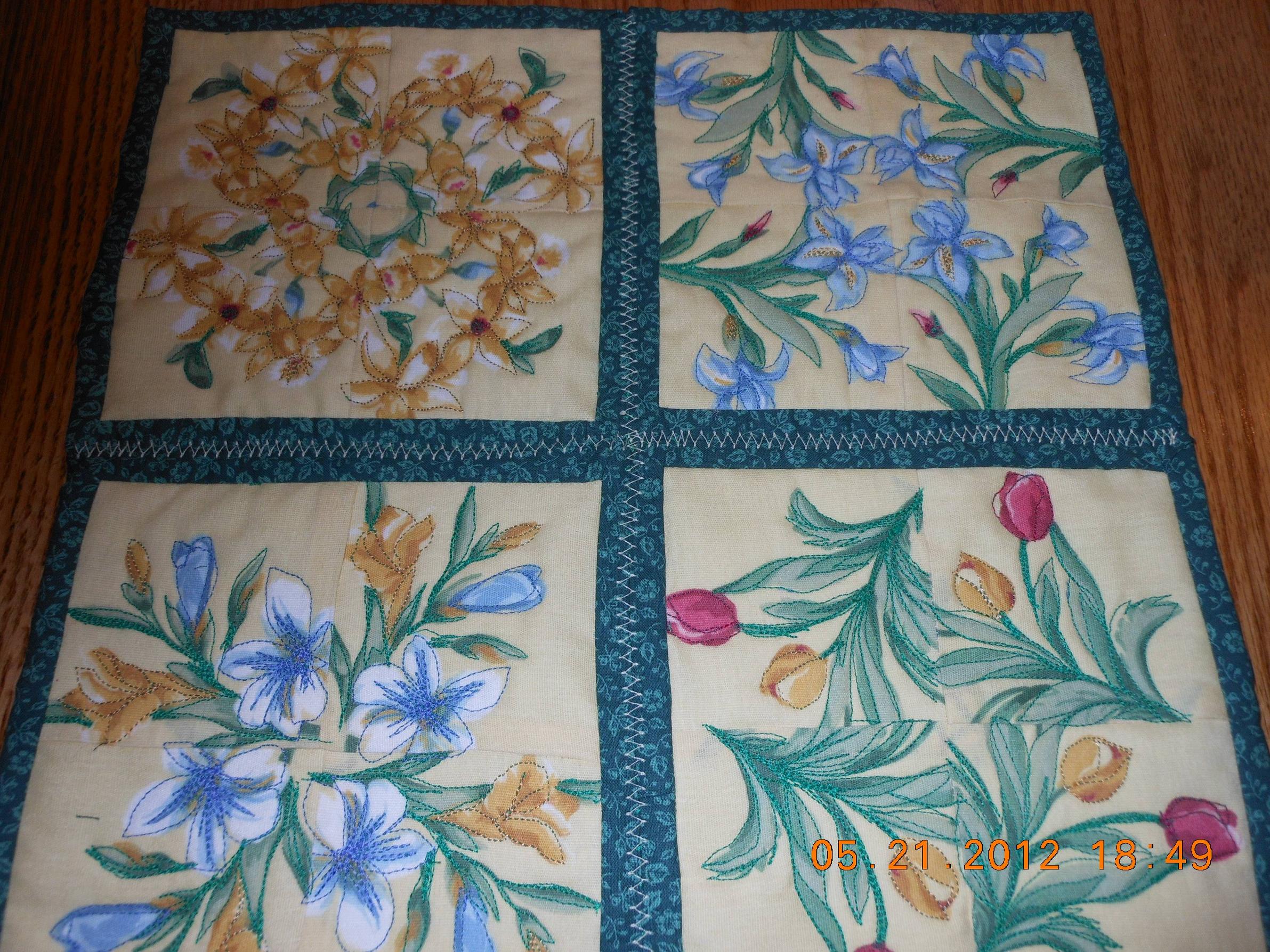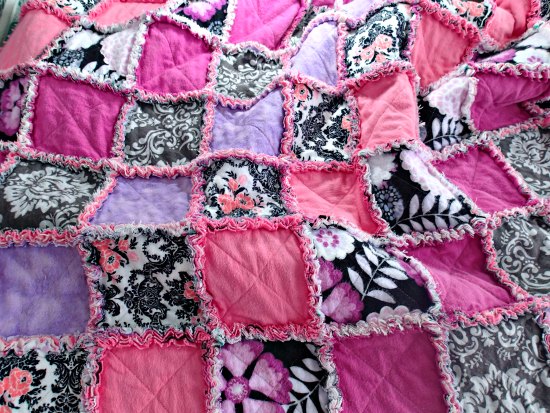A traditional potholder quilttraditional potholder quilt would use pre-assembled blocks, with the block edges finished (won't fray) and then sewn together to assemble the quilt.
The blocks can be finished in one of several ways:
- either with strips of fabric, or woven tape;
- bringing the front fabric to the back and over-casting it to the backing;
- by using a knife edge finish
One quilter who has made a potholder quiltquilter who has made a potholder quilt suggests first whipstitching on the back, and then finishing with a more decorative stitch.
This is whipstitched on the back connecting all four blocks. Now it’s time to do the decorative stitch. I decided to do a feather stitch with the machine, using a pale yellow thread to tie in with the background color of the squares.
There's a simpler, probably more modern version of a potholder quilt known as a rag quilt.
Individual same-size blocks are constructed as "sandwiches" (fabric on top and bottom, with batting in between), and then sewn together. The raw edges are left facing out on one side of the quilt, and snipped to encourage fraying.
This works particularly well with flannel fabric, leaving a soft, fuzzy border around each block. I could picture it working with knit fabric like T-shirts, as well.

